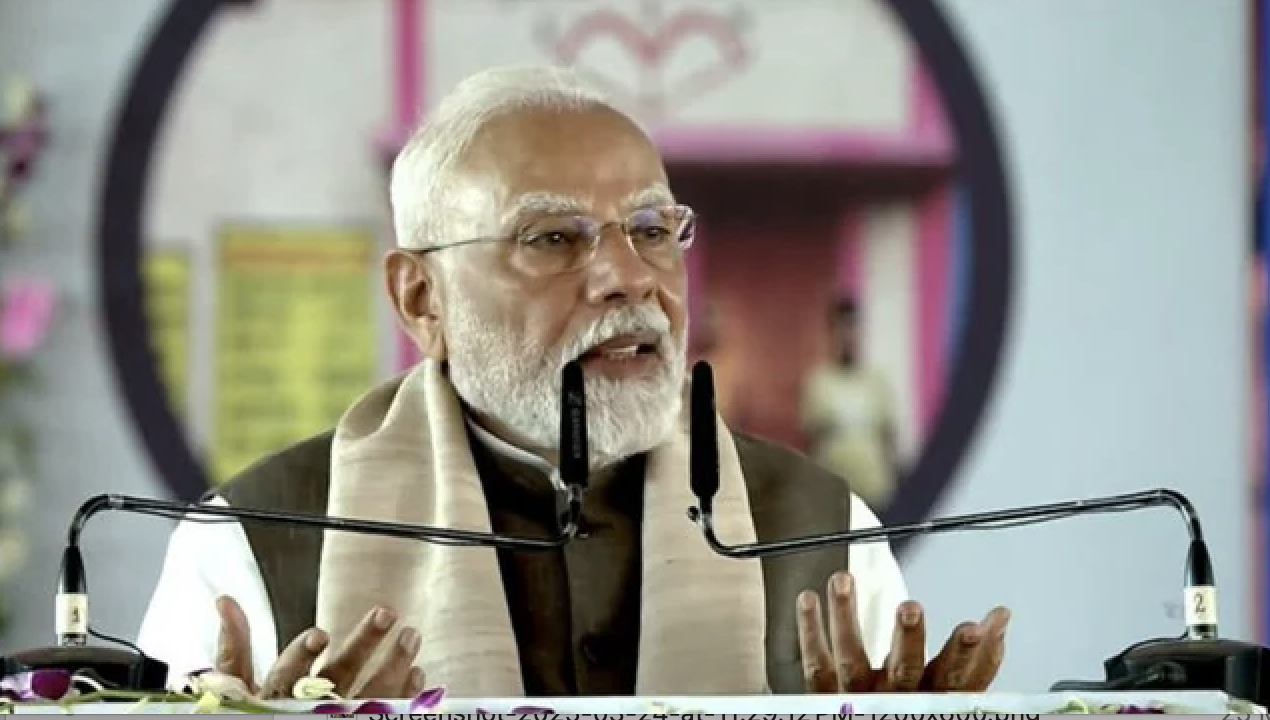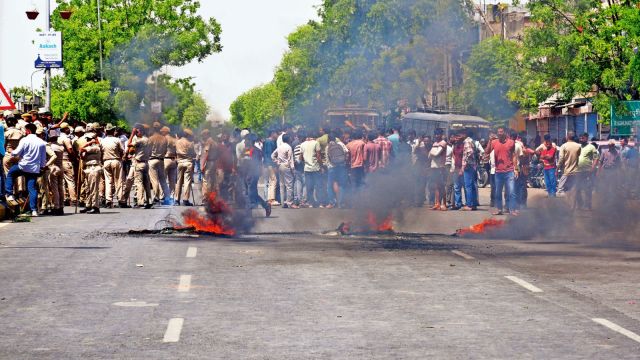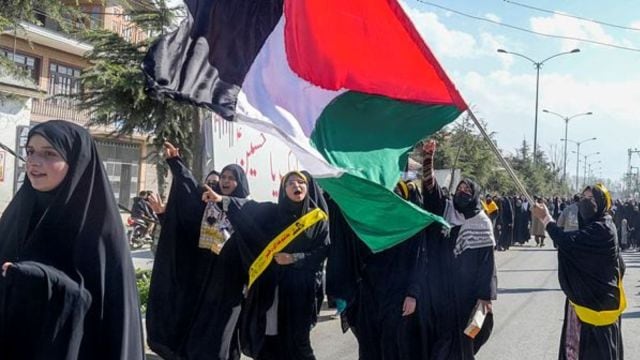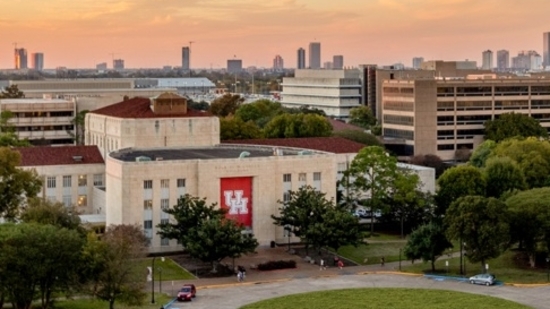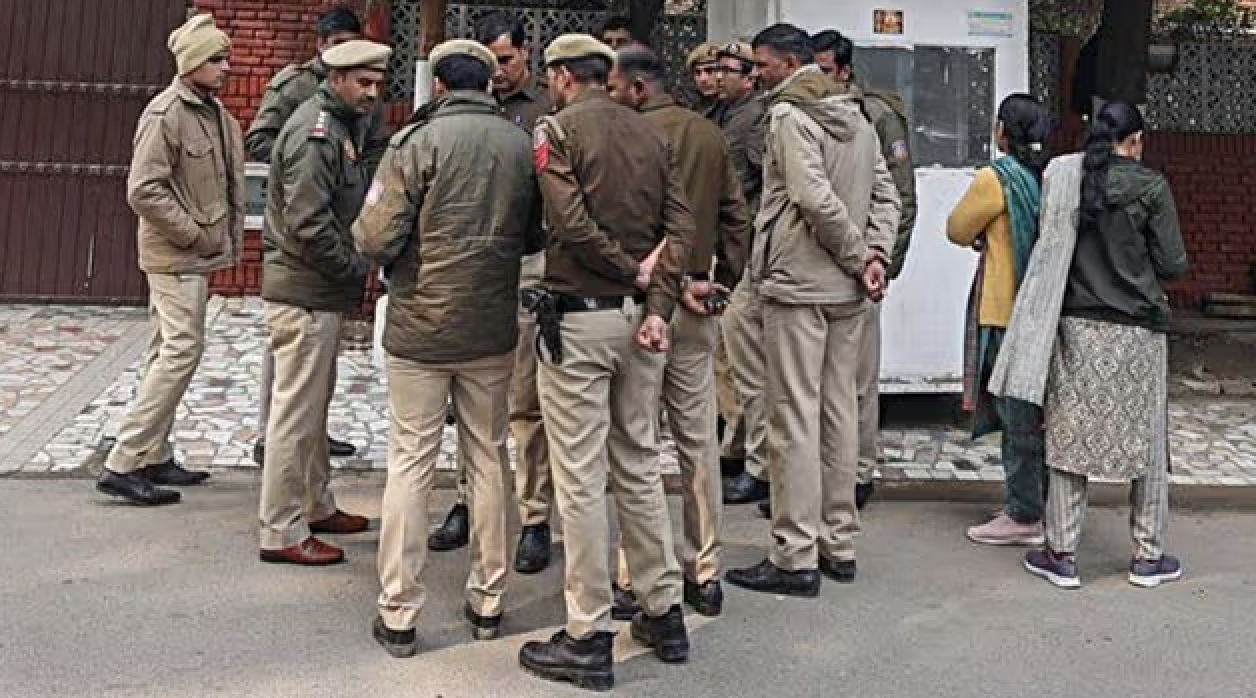
By Afreen Fatima
As India is barely able to breathe with the ongoing and unending shortage of Oxygen and ventilators following the second wave of COVID-19 triggered by Kumbh Mela in Uttarakhand and Prime Minister Narendra Modi’s rallies in West Bengal, India’s Hindu nationalists found time to force another Muslim youth to chant Hindu slogan ‘Jai Shri Ram’ before lynching him to death in Mewat, Haryana. The unfortunate incident is not an isolated incident nor was the usage of the slogan ‘Jai Shri Ram’.
Ever since Narendra Modi led BJP (Bhartiya Janata Party) government took power in the centre, the cases of hate crimes, particularly against Muslims, have risen exponentially and continue to take place in BJP ruled states and elsewhere but the usage of ‘Jai Shri Ram’ has a longer history than Modi’s history as India’s Prime Minister.
On June 17, 2019, horrifying video of a man tied to a pole and being assaulted by Hindu youths on alleged theft of robbery surfaced on social media. The man identified as Tabrez Ansari was lynched to death. He was repeatedly forced to say ‘Jai Shri Ram’. A day later, on June 18, 2019, AlMIM President and member of Parliament (MP) from Hyderabad, Asaduddin Owaisi was heckled with the same slogan ‘Jai Shri Ram’ by elected BJP parliamentarians as he began to take his oath for the fourth time as an MP.
These individual incidents of Tabrez Ansari and Asaduddin Owaisi are part of a larger politico-cultural supremacist imposition of Hindu Rashtra more often than not manifested with the usage of the slogan ‘Jai Shri Ram’. While the slogan, meaning ‘Victory to Lord Ram’, in itself is not violent, it has to be viewed in the context of its historical, political and socio-cultural connotations. The slogan can be best identified with the infamous Rath Yatra started by senior BJP leader and RSS member Lal Krishna Advani, leading to the demolition of Babri Masjid in Ayodhya, Uttar Pradesh in 1992. Author and constitutional expert AG Noorani in his book ‘The Babri Masjid Question’ notes: On December 6, 1992, the roads leading to the mosque were flooded with well built young karsevaks, sadhus and sanyasis in violent mood and temper, holding high trishulas and talwars and chanting in high pitch ‘Jai Shri Ram’ ‘Jai Shri Ram’.
Hindu God ‘Ram’ was chosen, out of all other Hindu Gods, to represent Hindu nationalism. Author and barrister Suchitra Vijayan in her essay notes: Just before Ram Rath Yatra, the Sangh (RSS) circulated posters and books that refashioned the image of Ram from a “compassionate and benevolent” deity into an angry god with “a trishul, a sword and an axe”, all poised to “annihilate”. “The new imagery of Ram came from television epics – Ramanand Sagar’s Ramayana and BR Chopra’s Mahabharata. The latter especially glorified a militaristic and virile Hinduism. The telecasting of these epics on Doordarshan resulted from the decision of an insecure Congress party”, notes AG Noorani in his book ‘The RSS: A Menace to India’.
In his book ‘Reflections of an Indian Muslim’ veteran journalist Saeed Naqvi notes RSS leader MD Deoras saying, ‘It is important that Muslims identify with Ram as an Indian symbol’. RSS leaders have for decades been imposing Ram as an Indian hero with the often-repeated statement, mentioned in the book ‘Hindus and Others’ by Gyanendra Pandey that ‘Ram is not just a religious, but a cultural hero, who must be honoured by every Indian, Hindu or non-Hindu’.
Preceding that, MK Gandhi had cherished a goal of bringing Ram Rajya (rule of Ram) in India, about which in 1929 he wrote, “The ancient ideal of Ramayana is undoubtedly one true democracy in which the meanest citizen could be sure of swift justice without an elaborate and costly procedure… a true Ram Rajya would ensure equal rights to both the price and pauper”. The organisation behind Gandhi’s assassination, the RSS interestingly adopted Gandhi’s goal of establishing Ram Rajya. At the first BJP convention in Mumbai, on December 28, 1980, several RSS members objected to the expression ‘Gandhian socialism’ (which is mentioned in BJP constitution) and urged its replacement by ‘Gandhian Ram Rajya’. Pritam Singh, Professor emeritus at Oxford University says, “Had Gandhi not been murdered by a Hindu fanatic, the ambiguous and contradictory nature of his thought would have made him a very valuable source of legitimacy for some versions of Hindutva ideology”.
Nonetheless, RSS leaders have not shied away from using the Gandhian phrase Ram Rajya in Indian politics to project a Hindu idea of India. Chief Minister of Gujarat and BJP leader Vijay Rupani said, “Mahatma Gandhi had dreamt of Ram Rajya and Narendra Modi is trying to make India as Gandhi had envisioned it”. More importantly, Rupani had said this, referring to under-construction of alleged Ram Mandir in Ayodhya, which was demolished by Hindu nationalists on December 6, 1992.
Following the demolition, the slogan ‘Jai Shri Ram’ embodied a sense of victory among the Hindu nationalists, and was continuously used to assert aggressive Hindu nationalism. The slogan henceforth has been used to bully, torture, brutalize and kill defenceless Muslims and other minorities. In the infamous 2002 Gujrat pogrom overseen by Advani’s protégé, then Chief Minister of Gujarat and India’s current Prime Minister Narendra Modi, the slogan was used by killers and even police as noted by Parvis Ghassem-Fachandi in his book ‘Pogrom in Gujarat’ and Ornit Shani in the book ‘Communalism, Caste and Hindu Nationalism’.
In more recent times, 25-year-old Kapil Gujjar shouted ‘Jai Shri Ram’ as he pointed his semi-automatic pistol towards the peacefully protesting Muslims in Delhi’s Shaheen Bagh sit-in site during the anti-CAA protests. It has been shouted in all BJP and RSS rallies, across India, often preceded with hateful rhetoric and communally charged speeches. In BBC’s piece titled ‘Jai Shri Ram: The Hindu Chant That Became A Murder Cry’, author has noted at least a dozen incidents when the slogan was used to attack defenceless Muslims. The list is much longer than a dozen. Tabrez Ansari, 66-year-old Maulana Asjad Husain Zaidi and hundreds of his Madarsa students, 18-year-old Mohd Israel, 17-year-old Hafiz Sameer Bhagat, his friends Hafiz Salman Gheetli and Hafiz Suhail Bhagat, 15-year-old Khalid Ansari, Imran Ismail Patel, 11-year-old Rajab Alam, youthful Abdul Waris, Muqaddis and Haroon, 16-year-old Taj Mohammad and countless others have been the victims of Jai Shri Ram, and were either injured or dead.
Asif’s lynching has once again pushed a lot of us to assert that Jai Shri Ram is a war cry used to terrorise, attack, humiliate, torture and kill defenceless, innocent Muslims. A lot of us have only heard the slogans with the pretext of hate against Muslims. Many well-meaning people are asking us to not blame religion. They need to understand that we’re not problematizing the content but the usage.
The slogan has become an instrument of violence and should be called one. A friend suggested it has almost become ritualistic to lynch Muslims while chanting that slogan, making it almost a religious act. Attacking those who are saying what needs to be said about the slogan is not what is needed to be done. Hindu population must acknowledge that their religious slogan has become a war cry and act to reclaim it from those who’ve been using it for violence and terrorism. It is them and only them who have to do it.
This story was first appeared on maktoobmedia.com


